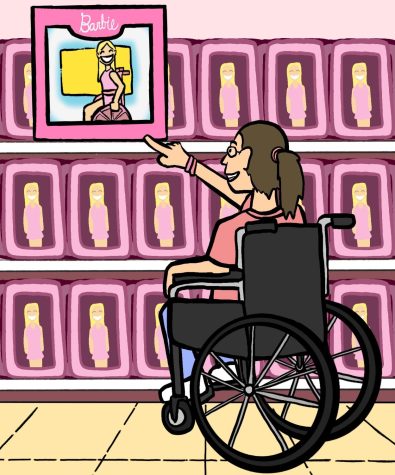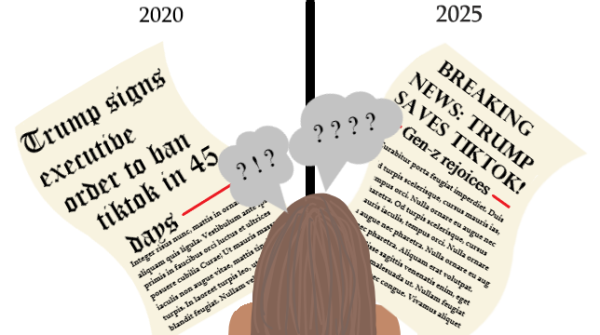Barbie and you

“You can be anything”, written across the painted faces of plastic Barbie dolls, is a campaign released by Mattel, the toy company behind the Barbie doll. The campaign encourages young girls to be ambitious and aim towards their aspirational selves. As a part of their campaign, Mattel announced the “trailblazer” Anna May Wong doll in honor of May being Asian American and Pacific Islander (AAPI) Heritage Month.
The Anna May Wong doll, inspired by the “first considered Chinese American actress,” is set to be open for purchase June 10. The doll dons Wong’s recognizable bangs, nails and red dragon adorned outfit from her appearance in the 1934 movie “Limehouse Blues.” Wong’s niece contributed to the design and look of Anna May Wong’s Barbie doll, according to AP News.
Mattel chose to announce the arrival of the Anna May Wong doll around AAPI Heritage Month as part of Mattel’s goal to continue pushing for diversity among its toys. They specifically chose to model after Anna May Wong for her significant contribution to Hollywood. According to the Smithsonian American Women’s History Museum, on top of being the first Chinese American actress, Wong was also the first to be a major box-office attraction.
Wong’s doll is a new addition to the Barbie Signature “Inspiring Women” collection, where Mattel takes stories, such as Wong and represents them through Barbie dolls. Wong would be joining Amelia Earheart, Frida Kahlo and Gabby Douglas in the Barbie collection. This continues to promote diversity and encouragement of young girls, aspiration wise, through the Barbie collection, according to Mattel.
The release of Wong’s Barbie doll during AAPI Heritage Month generates excitement for representational opportunities that come with its release. AAPI Heritage Month focuses on contributions, historic significance and cultures made by AAPI individuals, such as Wong’s contribution to Hollywood. Her representation in the Barbie collection devotes more attention and focus on the Chinese American population and their contribution to American history.
Aside from the promotion of AAPI Heritage Month, Mattel’s portrayal of Anna May Wong exposes young Asian Americans to women who look like them and are successful in their choice of career. According to the Smithsonian Museum of African American History and Culture, dolls in general hold the ability to mimic everyday life. In turn, children are able to play out various scenarios and “create space to understand cultural and societal values”.
Furthermore, Asian American children playing with the Anna May Wong doll allows them to imagine themselves more accurately while playing, especially in significant childhood development stages. Forbes’ “Diversity And Representation In Toys – Why The Products We See Matter” article talks to Minako Suzuki Lowe, the founder of Etsy Store BOKUNO, a doll series aimed towards “diversity, inclusivity and equality.” Lowe enforces the importance of dolls that look like the child, which increases self-worth as a child.
It is not only dolls, but toys which further promote healthy representation within young children, according to Lowe. This is because toys should “reflect the outside world,” which aids children in understanding more about themselves and the world they will soon grow up in. According to Statista, in 2021, 3.78 billion dollars were spent on purchasing dolls as toys for children. This illustrates how often children are exposed to children and therefore, the benefits of dolls follows.
While Mattel prepares for the release of the Anna May Wong, they also have released a Barbie doll with Down Syndrome. Similarly to the Anna May Wong doll, Mattel received help from Kayla McKeon, a lobbyist in the political scene who has Down Syndrome. Down Syndrome is a condition where children are born with an extra chromosome, which impacts a child’s physical development. With both dolls, Mattel emphasizes the importance of not only striving towards representation, but also ensuring representation is done right.
With the help of McKeon, Mattel’s release of the doll with Down Syndrome allows McKeon to have a sense of fulfillment for her younger self who has always loved to play with dolls. This new addition to the Barbie line only reinforces Mattel’s “You can be anything campaign” where young girls with a variety of conditions and a diverse range of cultures can be successful in their career choices.
As other toy companies start to follow Mattel’s lead in toys, not only girls, but young children can feel included within the real world as they learn more about the world and themselves. Representation in toys continues to be an integral part of society’s progression towards acceptance of everyone.

This year, I am co-Editor-in-Chief for 2022-2023. I’m a senior and a second-year Crusader staff member. Last year, I enjoyed my time serving as...

I am a senior at Bonita Vista High (BVH) and a Sports Editor for the Crusader. I joined staff in the second semester of last year on a whim and became...




